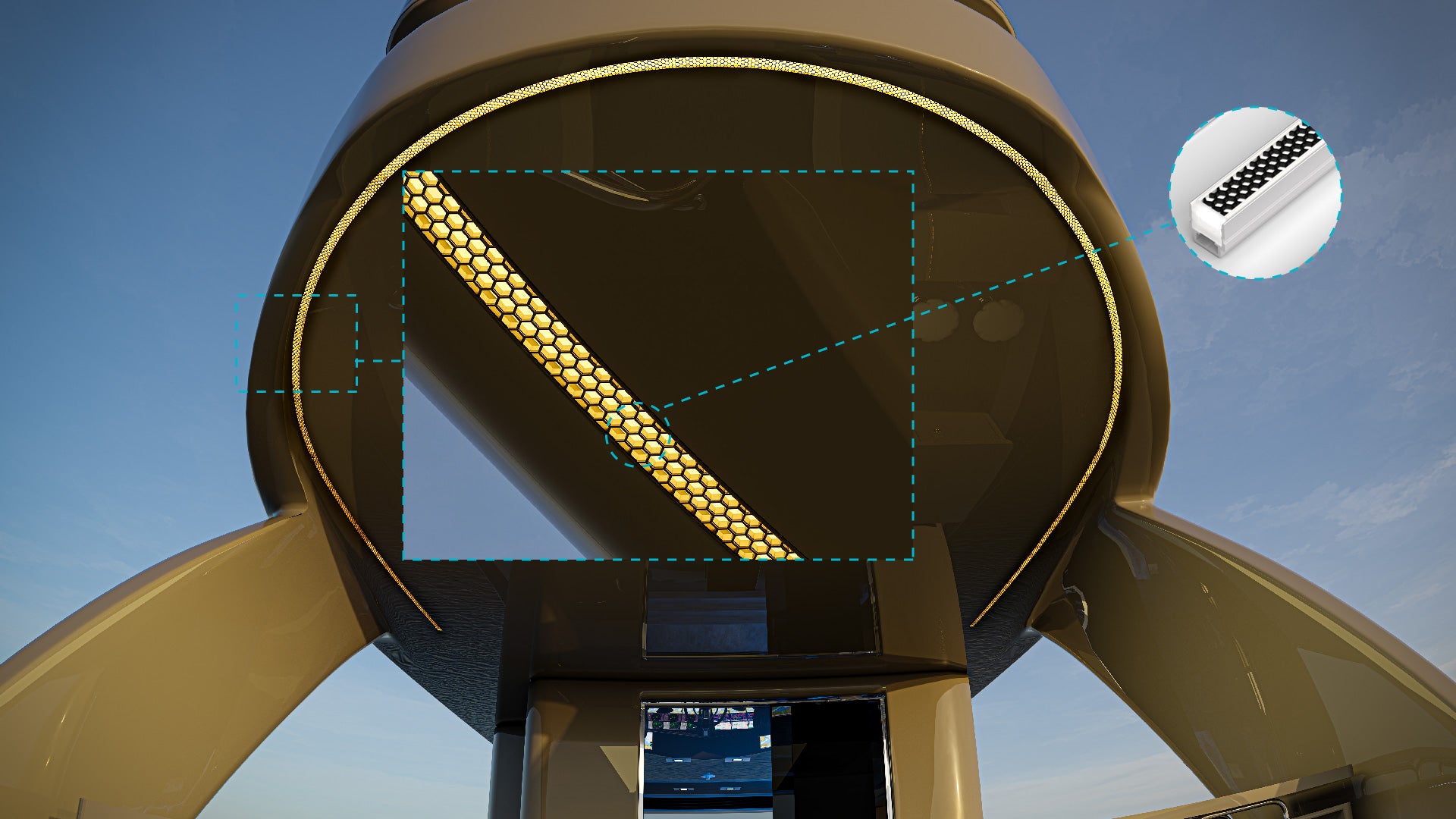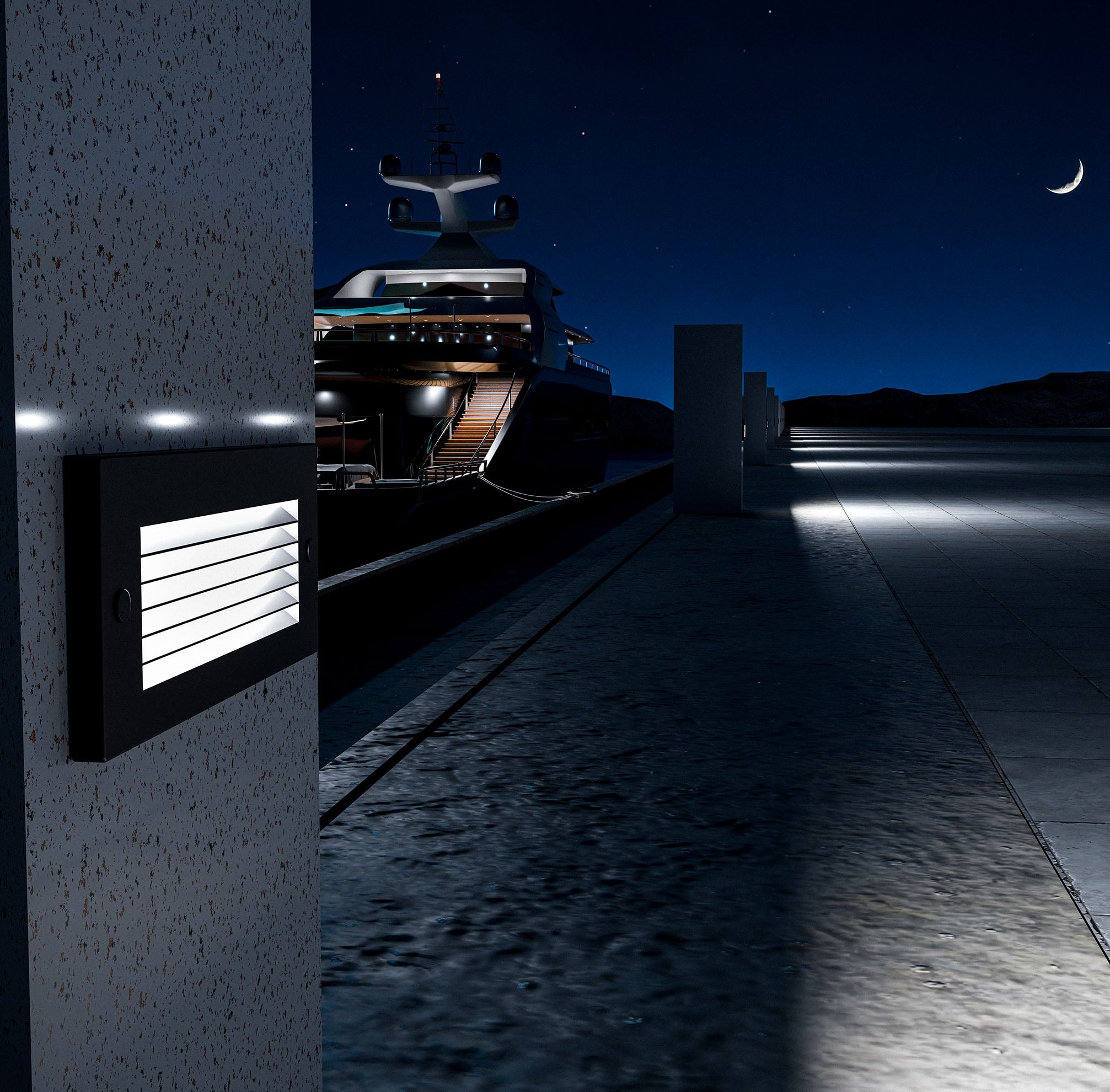Proper lighting on a boat is not only essential for safety and functionality but also enhances the overall boating experience. Marine LED lighting has revolutionized the way boaters illuminate their vessels, offering energy-efficient, durable, and weather-resistant solutions that outperform traditional lighting. Whether you're navigating at night, fishing after dark, or simply enjoying time on the water, choosing the right marine LED lighting is critical.
In this comprehensive guide, we’ll walk you through the key factors to consider when selecting the best marine LED lighting for your boat. We’ll explore the different types of marine LED lights, provide expert tips on installation and maintenance, and explain why upgrading to LEDs is a smart choice for boaters.
Why Marine LED Lighting is the Best Choice for Boats
Energy Efficiency
Marine LED lights use far less energy compared to halogen or incandescent bulbs, making them ideal for boats that often rely on limited battery power. LED lights convert more electricity into light rather than heat, which means they can illuminate your boat without draining the battery quickly. This energy efficiency allows boaters to extend their time on the water without constantly worrying about recharging the boat’s electrical system. For long-distance cruisers or those who anchor overnight, this energy savings is invaluable, allowing essential lights like navigation or anchor lights to run for longer periods with minimal power consumption.
Durability and Weather Resistance
Marine environments are tough on lighting due to constant exposure to moisture, saltwater, and UV rays. Marine LED lights are designed to withstand these harsh conditions. Built from corrosion-resistant materials such as stainless steel or UV-resistant plastics, they offer superior durability compared to traditional lighting systems. Additionally, marine LEDs typically come with high Ingress Protection (IP) ratings—usually IP65 or higher—ensuring they are waterproof and dust-resistant, making them ideal for use on decks, in cabins, or even submerged underwater for aesthetic lighting.
Brightness and Clarity
LED lights provide sharper, brighter illumination than traditional options. The ability to produce high levels of lumens means LED lights can penetrate fog, rain, or mist more effectively, making them essential for safe night-time navigation or docking. For boaters, the clarity of light is crucial, as it enhances visibility, improves safety, and reduces eye strain, especially in low-light or foggy conditions. Whether illuminating your boat’s deck or navigating a tricky marina, the focused beam of marine LED lights ensures optimal clarity.
Types of Marine LED Lights and Their Functions
Navigation Lights
Marine navigation lights are required by law and are critical for ensuring your boat remains visible to other vessels, especially at night or in low-visibility conditions. Marine LED navigation lights come in various forms, including red and green sidelights, stern lights, and all-round white lights. These lights are strategically placed on your boat to signal its position, direction, and activity (anchored, moving, etc.). LEDs are perfect for this application because they maintain consistent brightness and require less maintenance than traditional bulbs, ensuring you remain visible while conserving power.
Deck and Cockpit Lights
Deck and cockpit lighting is essential for activities like docking, fishing, or simply enjoying your boat in the evening. Marine LED floodlights and spotlights are ideal for illuminating wide areas on the deck, ensuring you can safely move around and perform tasks after dark. For cockpit lighting, LED lights provide focused illumination to the helm and control areas, allowing you to read instruments clearly. LEDs can also be recessed into the deck to provide unobtrusive, soft lighting, perfect for creating a relaxed atmosphere.
Underwater Lights
Underwater LED lights are both practical and decorative, illuminating the water beneath your boat to enhance visibility and create a stunning visual effect. Whether you’re docked at night or hosting an evening party on the water, underwater LEDs add a luxurious touch. These lights also help improve safety by making the hull and surrounding area visible when anchored in shallow or unfamiliar waters. Many underwater LED lights offer color-changing features, allowing you to customize the look of your boat’s lighting to match the mood or occasion.
Cabin Lights
Cabin lights are essential for interior spaces like galleys, sleeping quarters, and lounges. LED lights are ideal for these areas because they provide bright, uniform lighting without generating excess heat, which can be uncomfortable in confined spaces. Warm white LED lights (2700K-3000K) are often used in cabins to create a cozy, inviting environment. Dimmable LED options allow you to adjust the lighting depending on the time of day or activity, ensuring your cabin remains a comfortable and energy-efficient space.
Accent and Courtesy Lights
Accent lighting on a boat not only improves aesthetics but also enhances safety. Marine LED courtesy lights can be installed along stairways, walkways, and railings to ensure these areas are safely illuminated, reducing the risk of trips or falls. These lights are typically small but powerful, providing just enough illumination to guide you through dark areas without overwhelming your vision. LED strip lights can also be used to highlight architectural features of your boat, adding a modern touch to your vessel’s design.
Key Considerations When Choosing Marine LED Lights
Waterproof and Corrosion-Resistant Features
Marine environments are harsh, and your lighting must be able to withstand exposure to saltwater, rain, and UV rays. When selecting marine LED lights, it’s essential to choose lights with high IP ratings—ideally IP65 or higher—to ensure they are waterproof and dustproof. Lights made from corrosion-resistant materials like stainless steel or anodized aluminum are less likely to rust or degrade over time, ensuring they remain functional and looking good even after years of exposure to the elements.
Brightness (Lumens) and Beam Angle
When selecting marine LED lights, it’s important to consider the brightness of the lights, measured in lumens. For navigation lights, a higher lumen output is necessary to ensure visibility over long distances, while deck or accent lighting may require lower lumens to create a more subtle glow. The beam angle is also important—narrow beam angles are ideal for spotlights and focused illumination, while wider beam angles are better for floodlights and general deck lighting.
Color Temperature
Color temperature, measured in Kelvins (K), affects the mood and functionality of lighting. Cooler white lights (4000K-5000K) are ideal for task lighting or navigation, as they provide clear, bright illumination that enhances visibility. Warmer lights (2700K-3000K) create a more relaxed atmosphere and are perfect for interior spaces like cabins and lounges. Choosing the right color temperature helps ensure that your boat remains functional while maintaining a comfortable ambiance.
Voltage and Power Compatibility
Marine LED lights are typically available in 12V or 24V options to match most boat electrical systems. When choosing lights, ensure they are compatible with your boat’s power system to avoid electrical issues. Some boats may require voltage converters or adapters to properly integrate LED lighting into the existing setup. It’s also important to consider energy consumption—LED lights are highly efficient, so even brighter lights use less power than traditional bulbs, making them ideal for battery-powered boats.
Installation and Maintenance Tips for Marine LED Lighting
DIY vs. Professional Installation
Many marine LED lighting installations can be done as a DIY project, especially for simpler setups like cabin lights or deck lighting. However, more complex installations, such as underwater lights or lighting that requires extensive wiring, may require professional installation to ensure proper functionality and safety. Professional installation ensures that lights are wired correctly, waterproofed, and mounted securely, preventing issues like water damage or power failures.
Proper Mounting and Wiring
When mounting marine LED lights, placement is key to maximizing their effectiveness. Deck lights should be mounted to provide broad illumination without creating glare, while navigation lights must be positioned according to maritime regulations to ensure visibility to other vessels. Waterproof wiring is essential to prevent electrical shorts or corrosion in wet environments. Always use marine-grade wiring and connectors to ensure durability and safety.
Maintaining Marine LED Lights
Marine LED lights require minimal maintenance, but regular cleaning is essential to keep them functioning at their best. Saltwater deposits can accumulate on lenses and fixtures, reducing light output and causing corrosion over time. Clean your LED lights regularly with fresh water and a soft cloth to remove salt, dirt, and debris. Check for any signs of corrosion or damage to the wiring, especially after long periods of exposure to harsh weather. Well-maintained lights will last longer and provide consistent performance.
The Benefits of Upgrading to Marine LED Lighting
Long-Term Cost Savings
While marine LED lights may have a higher upfront cost than traditional lighting options, the long-term savings are substantial. LED lights last up to 25 times longer than incandescent or halogen bulbs, which means fewer replacements and less maintenance. Their energy efficiency also translates to lower power consumption, reducing the strain on your boat’s battery and cutting down on fuel or power costs over time. The combination of longevity and energy savings makes LED lights a cost-effective choice for boat owners.
Enhanced Safety and Visibility
Upgrading to marine LED lighting improves overall safety on the water by providing brighter, more focused illumination. Whether you’re navigating through a busy marina at night or docking in unfamiliar waters, LED lights ensure you have the visibility you need to avoid obstacles and hazards. LED lights also improve safety on deck by providing consistent lighting for walkways, stairs, and handrails, reducing the risk of accidents during nighttime activities.
Sustainability and Environmental Benefits
LED lights are more environmentally friendly than traditional bulbs because they use less energy and last longer, reducing waste. Additionally, LEDs are free of toxic materials like mercury, which are found in some other types of bulbs. By switching to marine LED lighting, boat owners can reduce their environmental impact and contribute to more sustainable boating practices.
Marine LED lighting offers boat owners a durable, energy-efficient, and versatile solution for all their lighting needs. Whether you’re upgrading your boat for safety, aesthetics, or energy savings, choosing the right LED lights is essential. From navigation lights to underwater lighting, marine LEDs provide reliable performance in even the harshest environments.
Explore K2 Lighting’s collection of high-quality marine LED lighting solutions to upgrade your boat today. With a wide range of options designed for durability and efficiency, K2 Lighting has the perfect lighting solutions for your vessel.





